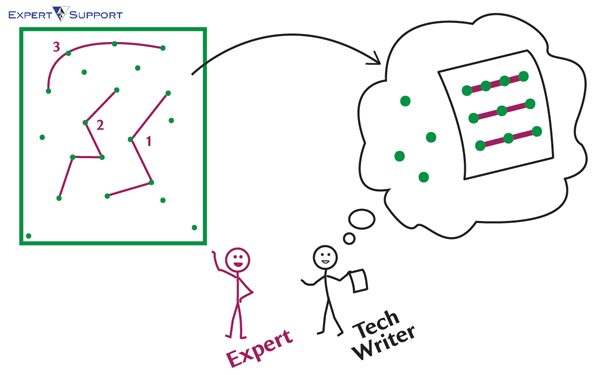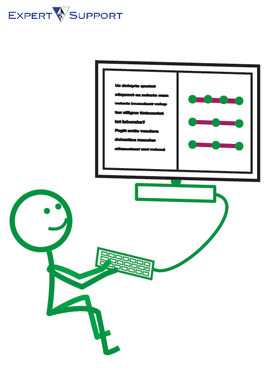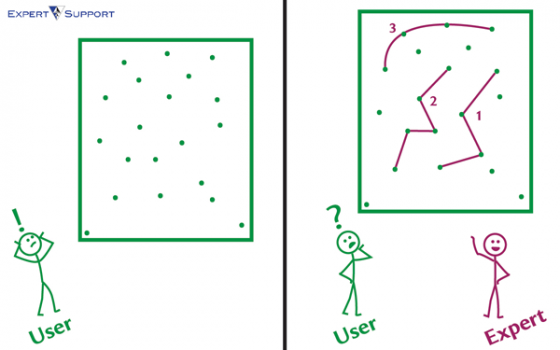In a previous post, we discussed the context gap—the difference in understanding between technology experts and technology users—created by innovation. One challenge in bridging this gap is the sheer volume of information available to technology users. When new users attempt to find their way through this vast ocean of information, they inevitably make poor choices. We call this the information overload challenge.
The information overload challenge exists even when all of the available information is good, reliable information. (Sadly, all available information isn’t always reliable—we’ll address that in our next post.)
Expert Support clients have complex products with deep functionality. The massive amount of information related to these products and their functionalities can be overwhelming or even intimidating to a new customer, new partner, or new employee who is trying to understand what they are working with.
The core issue is that many applications are designed to satisfy a number of functional and technical requirements for different communities of users with diverse needs. In aggregate, these applications can become more complex to use than their creators ever imagined. If the applications have evolved over a number of years, the complexity often grows accordingly.
Simply documenting the API endpoints assumes that the user of the documentation understands the subtleties of the application’s design and how to apply its features to suit their needs. Yet in most cases, the application developers don’t fully understand the specific needs of any given user, and create the application to address a broad range of contexts.
In one of our current engagements, the number of features and associated options in the API makes it difficult for even experienced developers to understand. Those new to the API find it challenging to decide which features to use in a specific context. This steep learning curve threatens the decision to adopt the API as part of the development stack, and if adopted, greatly increases the time before the adopter sees any benefits from the product’s use.
Effective technical communication can help users overcome the information overload challenge. Experienced technical writers work with experts to understand or create higher-level abstractions to organize and prioritize the details. Once explained to the user, these higher-level abstractions have the effect of simplifying the task.

In the engagement described above, we’re working with technology experts to create guides that narrow target audiences from “all developers on the planet” to much smaller groups of developers creating specific kinds of applications. Given the task focus of each guide, we’re identifying the right pieces of information that are crucial to the task, and defining a sensible sequence for certain contexts.
Such an approach inherently reduces the size of the target audience by focusing on the information needed for a specific task. The developers who use this documentation won’t develop broad knowledge of the entire platform, but they will get something specific done much more quickly.
The tricky part of this work centers around choosing which good information to include. The broader set of information is useful, but not all of it is relevant to the first high-priority task. Ruthless editing is both necessary and effective, but risks discarding important details. As always, there’s no replacement for sound editorial judgement combined with brilliant domain expertise.
But it’s worth the effort. Project acceleration enabled by well-focused technical communications translates directly into business impact in the form of accelerated revenues. In this particular engagement, our client hopes to cut 9-10 month deployment schedules down to 90 days or less.

And since you’ve made it all the way to the end of this post, let me suggest a book for further reading that has sharpened the way we solve such problems for our customers: Badass: Making Users Awesome, by Kathy Sierra. Several of us found it to be a fun read, and full of immediately applicable insights and new perspectives.
Do your new prospects and employees face information overload when trying to come up to
speed on your products? If so, have you thought about what they should focus on first? Second? I’d love to hear your stories about what you’ve found effective or challenges where we can help. I look forward to hearing from you.
And I invite you to sign up for our email list so we can let you know about important posts and updates.
